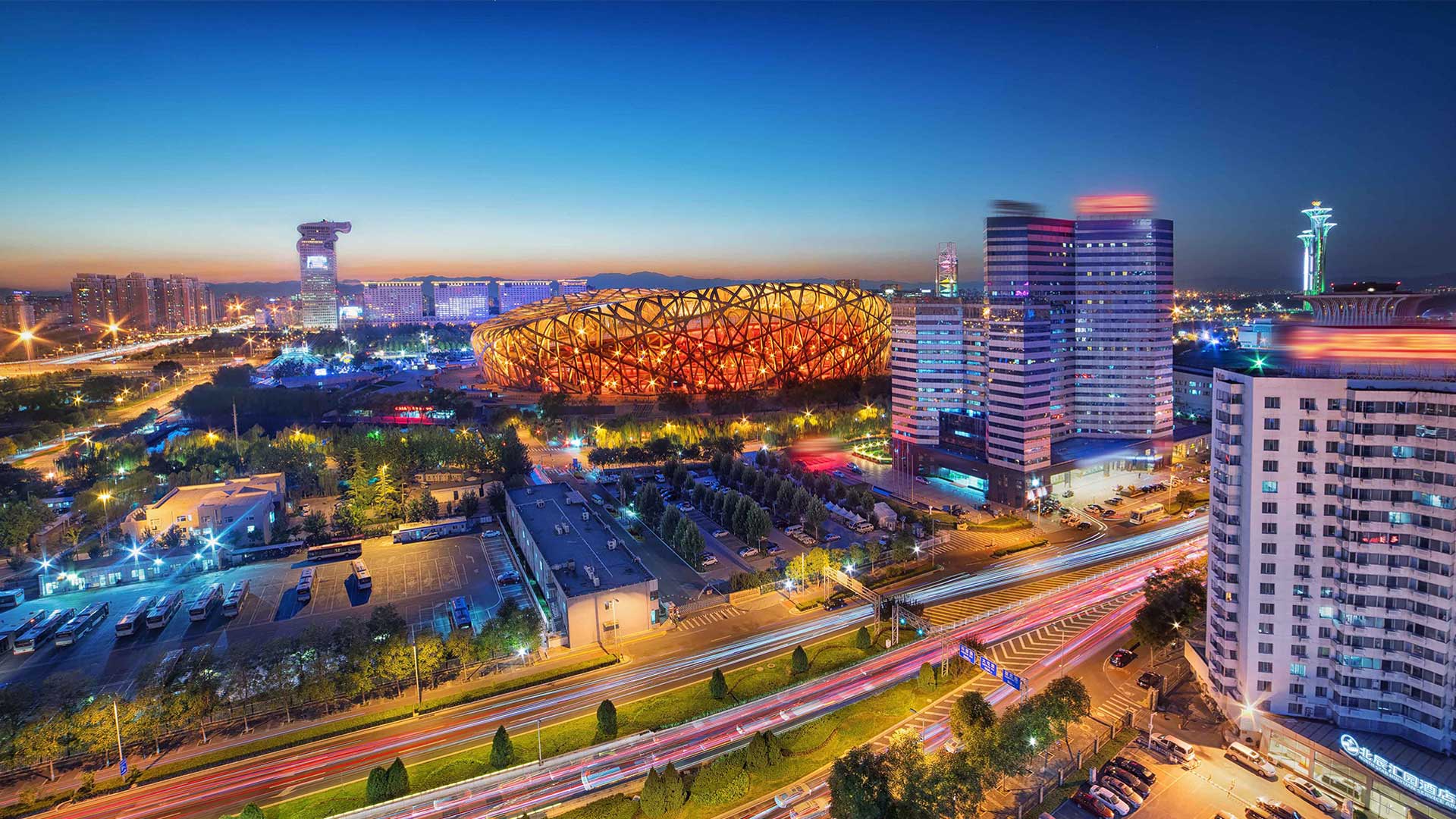标签 北京 下的文章
国家游泳中心, 中国北京 The National Aquatics Center in Beijing, China (© Han Haidan/China News Service via Getty Images)
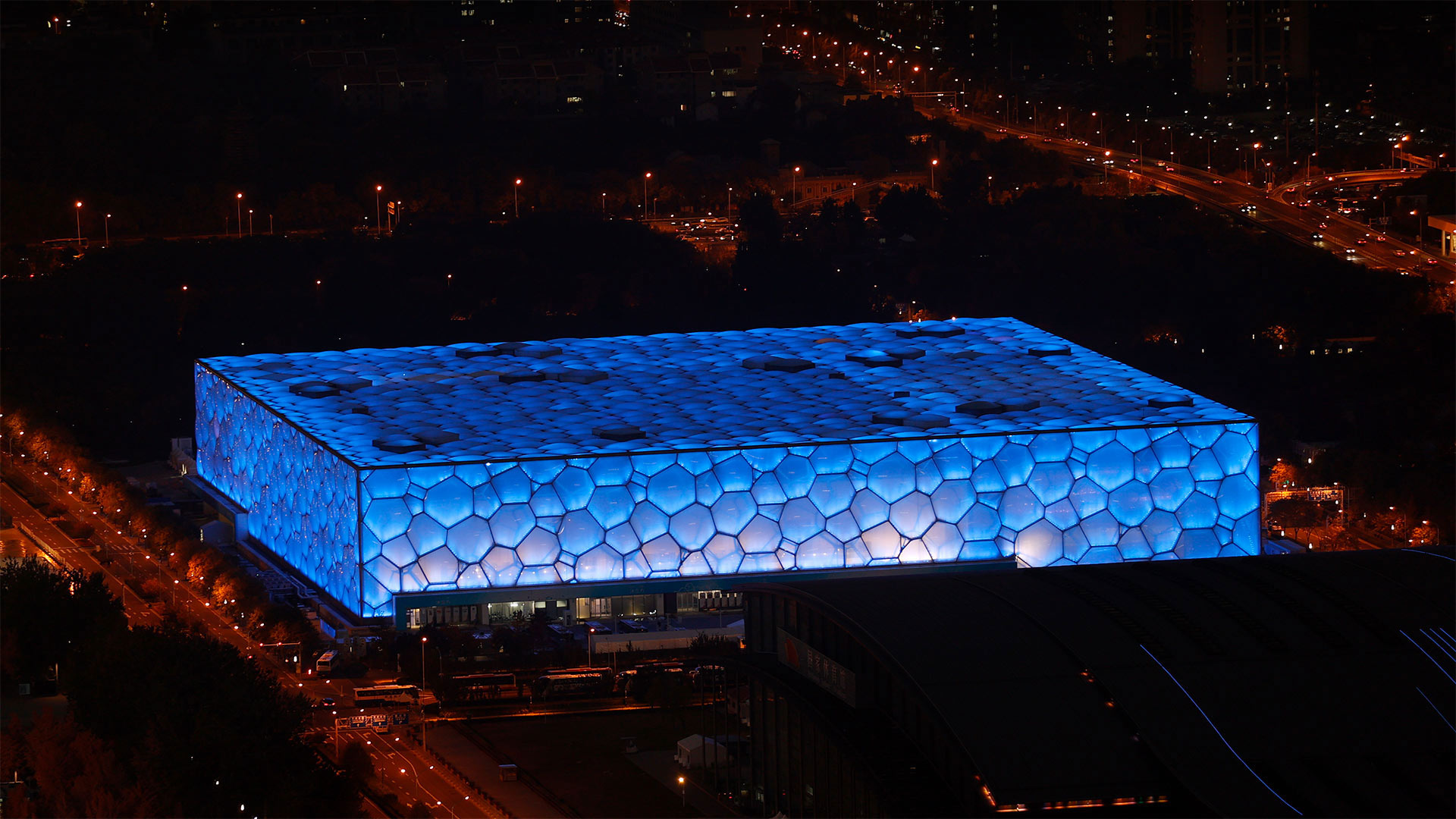
国家游泳中心, 中国北京 The National Aquatics Center in Beijing, China (© Han Haidan/China News Service via Getty Images)
Beijing's winter bubble 北京的冬季泡沫
2022 Winter Paralympics
The 2022 Winter Paralympics begins today in Beijing, as the Chinese capital becomes the first city to host both the summer and winter editions of the Paralympic Games. Over the next 10 days, about 600 athletes will compete in 78 different events across six sports—alpine skiing, cross-country skiing, biathlon, snowboarding, para ice hockey, and wheelchair curling. All the events will take place in a strict Covid 'bubble' system to ensure a safe and successful Games.
Speaking of bubbles, today we're looking at the National Aquatics Center, a box-shaped building that will host the wheelchair curling events. The design of the bubble-wrapped façade—made from a thin, transparent material called ETFE—is based on the Weaire–Phelan geometric structure, which is derived from the natural pattern of bubbles in soap lather. The venue was originally constructed to host the swimming, diving, and synchronized swimming competitions at the 2008 Summer Olympics and Paralympics. But its pool has been turned into an ice rink for the winter events, making it the first sports arena in the world that can switch between water and ice.
2022年冬季残奥会
2022年冬季残奥会今天在北京开幕,中国首都成为第一个举办夏季和冬季残奥会的城市。在接下来的10天里,大约600名运动员将参加78个不同项目的比赛,包括高山滑雪、越野滑雪、冬季两项、单板滑雪、para冰球和轮椅冰壶。所有活动都将在严格的新冠病毒“泡沫”系统中进行,以确保安全和成功的奥运会。
说到泡泡,今天我们来看看国家游泳中心,这是一座长方形的建筑,将举办轮椅冰壶比赛。泡沫包裹立面的设计是基于Weaire–Phelan几何结构,由一种称为ETFE的薄透明材料制成,该几何结构源自肥皂泡中气泡的自然图案。该场馆最初用于举办2008年夏季奥运会和残奥会的游泳、跳水和花样游泳比赛。但它的游泳池已经变成了冬季赛事的溜冰场,成为世界上第一个可以在水和冰之间切换的运动场。
亚运村夜景,北京 (© ViewStock/Getty Images)
石林峡风景区玻璃观景台, 中国北京平谷 Glass sightseeing platform in Shilinxia Scenic Area, Pinggu District of Beijing, China (© STR/AFP via Getty Images)
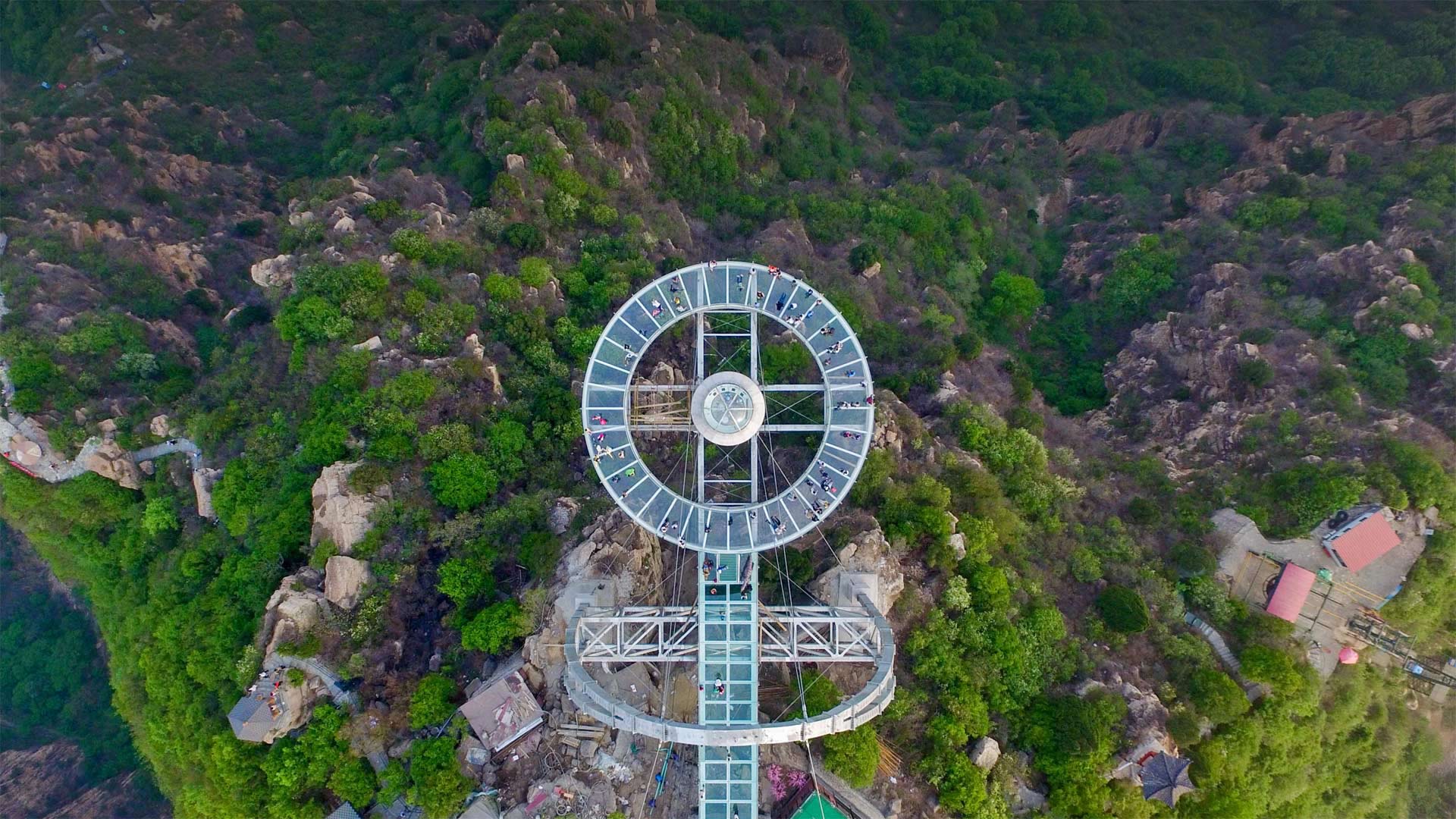
石林峡风景区玻璃观景台, 中国北京平谷 Glass sightseeing platform in Shilinxia Scenic Area, Pinggu District of Beijing, China (© STR/AFP via Getty Images)
Spectacular views below!
When residents of the bustling metropolis of Beijing, China, need a break from their daily grind, many will head about 45 miles north of the city to take in the sights at the Shilinxia Scenic Area. Meaning 'Gorge of Stone Forest,' Shilinxia is a protected 7-and-a-half mile gorge which, since 2016 has featured an amazing main attraction—one of the world's largest glass sightseeing platforms.
If you're scared of heights, this platform may not be for you, as it sits roughly 1,300 feet above the valley floor and juts out nearly 108 feet from the tallest point in the gorge. But don't worry: Even though it may inspire a bit of vertigo and has been known to sway a bit with the wind, the platform is perfectly safe—the glass floor is reinforced by titanium alloys. Once out on the platform, viewers can look down through glass into the rugged sandstone rocks and forest of the Shilinxia gorge below. It's easy to also catch a glimpse of some local landmarks, including the nearby Huangsongyu reservoir, Diaowo Village, and the Shilin River.
下面是壮观的景色!
当中国北京这座繁华都市的居民需要从日常工作中休息一下时,许多人将前往北京以北45英里处的石林峡风景区游览。石林峡的意思是“石林峡谷”,是一个受保护的7.5英里长的峡谷,自2016年以来,石林峡一直是世界上最大的玻璃观光平台之一。
如果你怕高,这个平台可能不适合你,因为它坐落在大约1300英尺以上的谷底和突出近108英尺的最高点在峡谷。但别担心:尽管它可能会引起一点眩晕,而且已知会随风摇摆一点,但平台是完全安全的——玻璃地板由钛合金加固。一旦登上月台,观众可以透过玻璃俯瞰下面石林峡崎岖的砂岩和森林。也很容易看到一些当地的标志性建筑,包括附近的黄松峪水库、刁窝村和石林河。
北京颐和园昆明湖上的十七孔桥,中国 The Seventeen-Arch Bridge over Kunming Lake in Beijing Summer Palace, China (© Jia Wang/Getty Images)
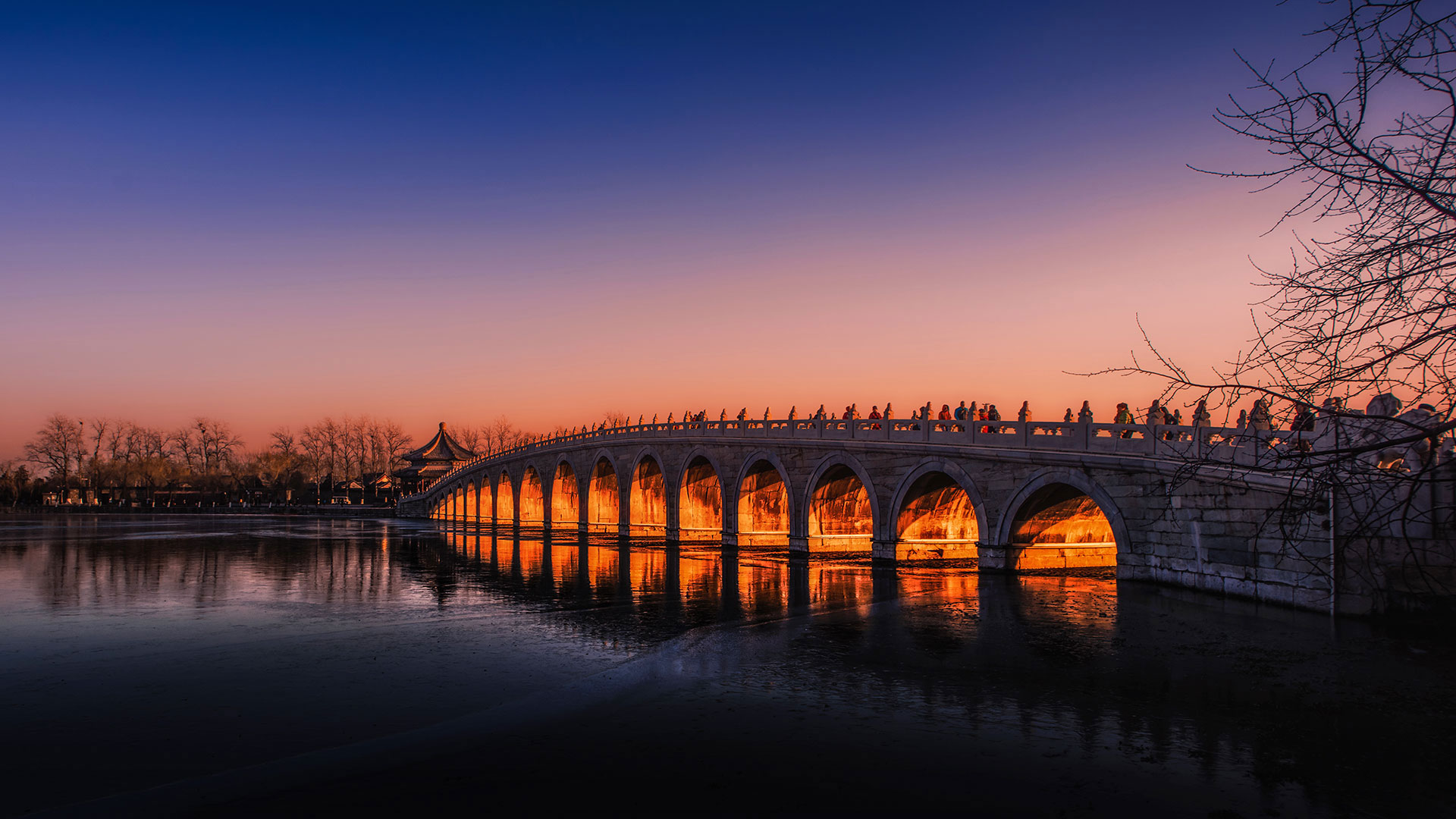
北京颐和园昆明湖上的十七孔桥,中国 The Seventeen-Arch Bridge over Kunming Lake in Beijing Summer Palace, China (© Jia Wang/Getty Images)
Seventeen arches at sunset
When it's winter solstice time in the Northern Hemisphere, the setting sun shines under the Seventeen-Arch Bridge of the Summer Palace in Beijing, causing this romantic glow. In the 18th century, during the reign of the Qing dynasty of China, Emperor Qianlong ordered the construction of this 1.1 square mile collection of gardens, lakes, and various structures including temples and small palaces. Today it's one of Beijing's premier attractions and will be crowded today with visitors headed to the bridge in time for sunset.
An aerial view of Daxing International Airport in Beijing (© Xinhua/Alamy)
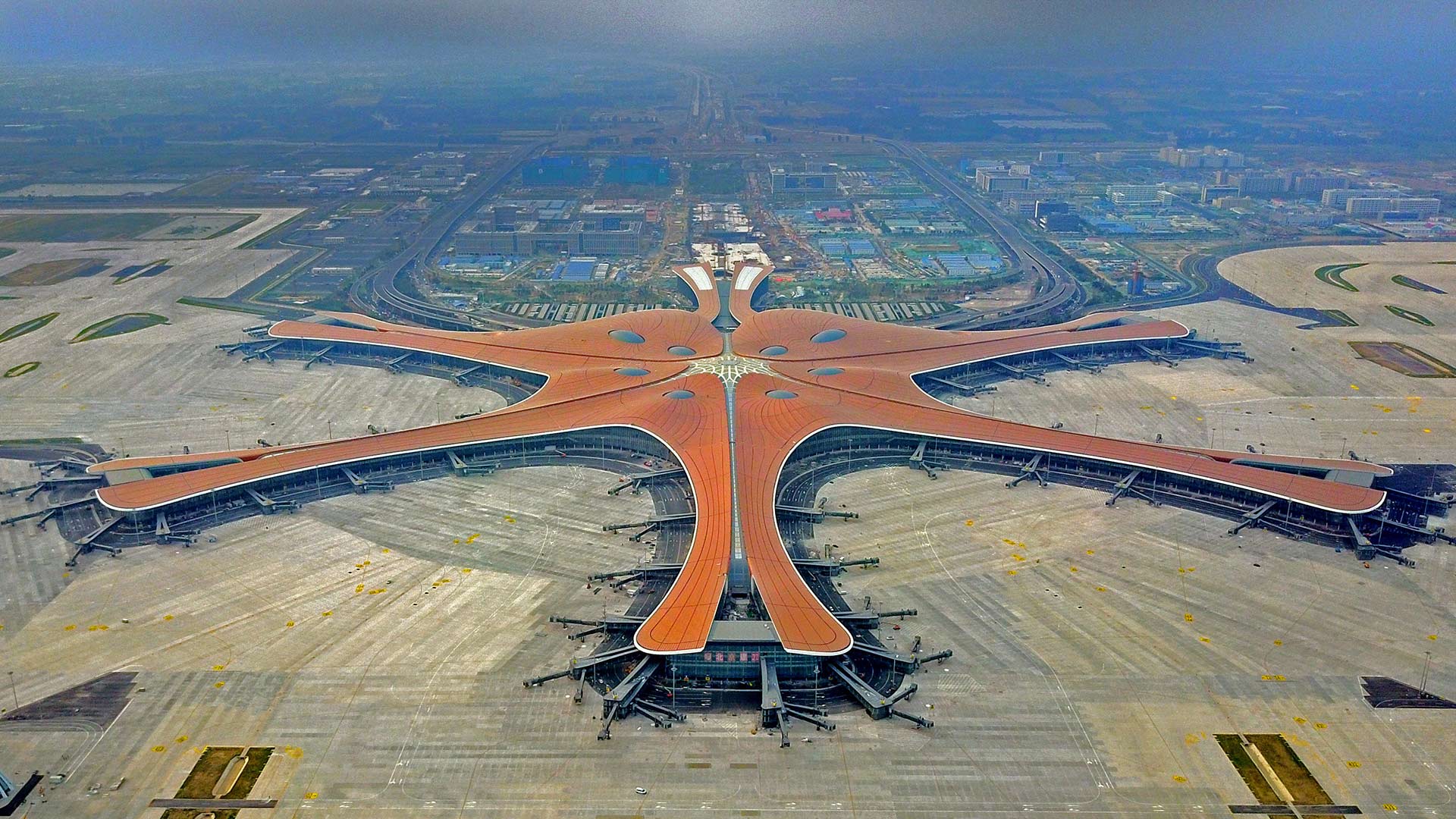
An aerial view of Daxing International Airport in Beijing (© Xinhua/Alamy)
Wheels up in Beijing
Last Wednesday, September 25, China officially opened the world's largest airplane terminal, Beijing Daxing International Airport. Constructed to alleviate pressure on the city's existing airport, Beijing Capital International, the bright orange starfish look-alike took more than four years to construct. And travelers, hold on to your hats, because Daxing International will connect to China's capital city—about 30 miles away—with a high-speed train that travels at top speeds of more than 200 mph.
Sitting on 18 square miles of land, the massive terminal was designed by legendary architect Zaha Hadid, who also masterminded China's Guangzhou Opera House. In a nod to traditional Chinese architecture, the building consists of a central hub with six curved spokes—bringing organization to the interconnected spaces around a central courtyard and minimizing the building's environmental footprint. Inside, passengers will feel like they're in anything but an airport with dark, polished-stone floors and white ceilings that open intermittently to big, beautiful skylights.
